- Home
- Terry Pratchett
Turtle Recall: The Discworld Companion ... So Far Page 17
Turtle Recall: The Discworld Companion ... So Far Read online
Page 17
A few have managed to survive in this world in very special circumstances, but for most of them the reality they desire is soon fatal. Insofar as they can be said to have any emotions, the guiding one is hatred of all ‘real’ creatures. They are jealous of life and all things alive.
They are lured by really heavy concentrations of magic, because these weigh heavily on the frail rubber sheet of reality and present a weak point at which to break through. They can even break through inside a mind, using its owner’s voice and brain to further their own ends – and a mind with magic in it shines out for them like a beacon. The number eight is also said to have some attraction for them, which is why wizards are enjoined to avoid saying it.
Dunmanifestin. Abode of the Disc’s gods, atop CORI CELESTI. The stuccoed Valhalla wherein the gods face eternity with the kind of minds that are elsewhere at a loss to know what to do to pass a wet afternoon. Your basic home of the gods, with marble pillars and huge, impossible-to-carpet floors.
Dunnykin, Brother. A member of the ELUCIDATED BRETHREN OF THE EBON NIGHT. Seemed to consist entirely of a little perambulatory black robe with halitosis. [GG]
Dwarfs. A race of humanoids approximately 4 feet tall. Stocky, bearded, long-lived (c. 300 years) and with a natural attraction for mountains and mineshafts, they provide the STO PLAINS area with most of its miners and ‘heavy’ engineers.
Unlike TROLLS, it appears that beyond the matter of build there are no major genetic differences between dwarfs and men, any more than there are genetic differences between bulldogs and poodles. Certainly the Discworld’s second-greatest lover, CASANUNDA, seems to have met no insurmountable difficulties in his busy schedule.
A flaw in dwarfish nature from a human point of view is their tendency to take things literally. This is a result of their subterranean life. In an environment where there are things always ready to explode or collapse it is vitally important that information be passed on clearly and honestly. The human language, with its unthinking reliance on metaphor and simile, is a veritable minefi— a complete morass— a fog of incomprehensi— very difficult for dwarfs.
Dwarfs wear up to twelve layers of clothing, including the famous woolly dwarf’s vest made from RAMTOPS sheep wool, which is the closest thing possible to natural chain mail. All dwarfs have beards and this, together with the aforesaid clothing, makes gender more or less optional for everyday purposes.
Many of the more traditional dwarf tribes have no female pronouns like ‘she’ or ‘her’. It should be pointed out that they have no male pronouns either – ‘he’ is considered by them to embrace both sexes equally, as it were, in the same sexless sense as the word mankind (or at least the same sexless sense as the word mankind is considered to have by men). They do, however, adopt a suitable pronoun when they are dealing with men, because of the embarrassment otherwise caused to humans.
A dwarf is not considered old enough to have the facts of life explained to him until he has reached the age of puberty (at about fifty-five). Dwarfs are very reticent about revealing their sex, which most of them don’t consider to be very important compared to things like metallurgy and hydraulics. Dwarf courtship consists of finding out, in delicate and circumspect ways, what sex the other dwarf is.
Copperhead dwarfs tend to be shorter and noisier than their Überwald fellows, and they are more at home among humans. The Überwald dwarfs are quiet and tend to scuttle around corners to avoid people and often don’t speak Morporkian. These two factions, however, strongly dislike each other and their divisions give rise to vendettas and feuds that have their origins in two adjoining mine shafts five hundred miles away and a thousand years ago. The way you wear your helmet, the way you part your beard – all these speak volumes to dwarfs.
Politically, the dwarfs are ruled by a king, although again the word is shorn of most of its human connotations and really means ‘chief mining engineer’. Most mines have a king.
There are, however, kings and kings. The senior king, perhaps better thought of as the first among equals, is the Low King of Überwald, who rules all those areas of Überwald that are below ground. As titular head of such an area, he is therefore accorded respect by all other dwarfs (in dwarf terms, that means they don’t raise their voice when arguing with him.) He is crowned on the 1,500-year-old Scone of Stone, an ancient bun the size and shape of a well sat-on cushion, with a few fossilised currants visible on the surface. It weighs about 16lbs, and has represented the legitimacy of the Low King since the days of B’hrian Bloodaxe, who he sat on it when it was still warm and left his impression, as it were.
A street in the Shades
The Low King is the final court of appeal for all matters relating to Dwarf Law. He sits on the Scone to give his judgements. It’s the real thing, too. No matter what happens . . .
Large numbers of dwarfs have been drawn to Ankh-Morpork, where they are the biggest non-human ethnic group. Usually, they fit in well. All dwarfs are by nature dutiful, serious, obedient and thoughtful, and their only failing is a tendency, after one drink, to rush at enemies, screaming ‘Aarrgh!’ and axing off their legs at the knee. No one knows why it is that dwarfs, who at home in the mountains lead quiet, orderly lives, forget it all when they move to the big city. Something comes over even the most blameless iron-ore miner and prompts him to wear chain mail all the time, carry an axe, change his name to something like Grabthroat Shinkicker and drink himself into surly oblivion. It is noticeable that the dwarfs in Ankh-Morpork are far more ‘dwarfish’ (in the clichéd sense of being stroppy gold-obsessed little buggers in iron helmets and chain mail) than they are in their natural environment, but the same statement with minimal adjustments could be made about the Irish in New York, the Welsh in London and Australians everywhere. (See also DWARFS AND MARRIAGE)
Dwarf bread. A dwarfish delicacy and battle weapon. Originally a sensible attempt to make a weapon that could also be eaten, it contains all you need to sustain you for days, mainly by causing you to perform miracles of endurance in order to get somewhere where you don’t have to eat dwarf bread. Dwarf cake is similar, but thicker. A properly thrown slice of dwarf bread is a fearsome weapon, especially in view of its erratic aerodynamic properties.
Ingredients are often secret, since every dwarf baker has their own special recipe, but generally flour, water, grit, gravel and stone-ground stones are in there somewhere.
Dwarf Bread Museum. This is in Whirligig Alley, Ankh-Morpork, and experts in the history of aggressive baking concede that it is probably the most comprehensive display of battle bread yet assembled. There are many examples of classic cowpat-like shape, said to be an echo of their taste, but also to be seen are buns, close-combat crumpets, deadly throwing toast and several splendid specimens of the rare boomerang croissant.
Despite its fame in specialised circles, the Museum (entrance: one penny) is largely unvisited, and is currently believed to be still closed following the death by bread of its curator, Mr HOPKINSON.
Dwarfs and Marriage. The facts are these: a dwarf needs to get gold to get married. It costs a lot of money to raise a young dwarf to marriable age. Food, clothes, chain mail . . . endless expenses. And they need repaying. Two dwarfs getting married must each ‘buy’ the other dwarf off their parents. It’s a sort of two-way dowry. And it has to be paid in gold or gems, because that’s traditional. Hence the dwarf saying: ‘worth his weight in gold’ (dwarfs aren’t big on metaphor – some mines priced dwarfs that way.)
Of course, if a dwarf has been working for his parents then that will be taken into account on the other side of the ledger, and a dwarf who leaves off marrying until later in life may possibly be owed quite a tidy sum in wages.
All this appears rather chilly, but it is traditional and appears to work. Invariably, after being paid in full for the raising of their offspring, the parents will give the couple a huge wedding present – often much bigger than the dowry. But that is then between dwarf and dwarf, out of love and respect – not between people who ar
e, in a sense, debtor and creditor. In many ways, it works rather better than the human system based system. Everybody seems to win.
Dykeri. Ephebian philosopher. Author of Principles of Navigation. Got lost trying to find his way out of the bathroom. [SG]
Dysk. VITOLLER’S theatre in Ankh-Morpork. Presumably rather similar to London’s Globe Theatre, but possibly flatter. [WS]
Earwig, Mrs Letice. A tall thin witch from the Chalk, though she was not born locally. She pronounces her surname ‘Ah-wij’. Mrs Earwig had married a wizard (though he doesn’t do any wizarding these days). She is, as I said, tall and thin, with a long sharp face, set off with an expression that says you are slightly annoying her and she is being gracious enough not to let it show. She dresses in black, of course, but it’s a very decorative, rich, deep black – all lacy and ruffled and set off with more silver jewellery than you might imagine. Some of her silver rings are like silver ring gloves – designed to look like claws. She has a very tall pointy hat, with stars on it and glittering silver hatpins. Every doorframe in her house has a tall pointy hat bit to accommodate her hat. She wears silver spectacles on a little chain. Her house has a five-pointed silver star on the door. Mrs Earwig advertises. [W, AHFOS, etc]
Eateries. Prominent among Ankh-Morpork’s most available places to eat are the CURRY GARDENS (a greasy stick), GIMLET’S Hole Food delicatessen, HARGA’S HOUSE OF RIBS, Ron’s Pizza Hovel, Mundane Foods, the Laughing Falafel and Fat Sally’s. The Three Jolly Luck Take-Away Fish Bar in Dagon Street did not make it beyond its opening night (see HONG, MR).
Ee. The Lost, or Forbidden, City of Ee was originally sited in the Great NEF, and it was the location of the miraculously preserved first pizza created on the Disc. It appears that Ee is not only a brigadoon but also one of the specialised ones that are not moored to one site but reappear in different places.
Eight. A number of some considerable occult significance on the Disc. In theory it must never be spoken by a wizard, although in fact it is generally safe in and around the University and wizards do seem to be able to get away with it elsewhere. However, outside magically protected places, no sensible wizard will mention it if he can avoid it; the problem lies in finding the sensible wizard. After all, generations of young wizards have accepted, with a frisson of fear, the injunction ‘never say the number that comes between seven and nine, otherwise you will be ate alive’ without wondering how the terrible occult forces were able to distinguish between two identical-sounding syllables without seeing them written down. Nevertheless, there is something about the harmonics of the word that is attractive to the denizens of the DUNGEON DIMENSIONS, and it is the number of BEL-SHAMHAROTH, one of the most successful of them to have maintained form and vitality in the world of reality. There are eight days in a Disc week, and eight colours in a Disc spectrum. [COM]
Eightfold Seal of Stasis. Design on the floor of the room housing the OCTAVO. Generally agreed in magical circles to have all the stopping power of a well-aimed brick. [LF]
Eightpanther. Maker of Captain Eight-panther’s Traveller’s Digestives. Claimed to have saved many a life at sea. They are rock-hard, and purchasers are not sure whether to use them as a raft or just throw them at the sharks and watch the wretched things sink. Although these biscuits originated on the Counterweight Continent, anecdotal evidence suggests they are very similar to Dwarf Bread. [COM]
Elenor of Tsort (or is it of Crinix? or of Elharib?). Elenor was the cause of the Tsortean Wars. She was kidnapped from the Ephebians (or was it by the Ephebians? She has figured in legend so often that details have become obscured, or possibly she was just a very popular girl). What is known is that however legendarily beautiful she may have been at the start of the war, by its conclusion she was plump, good-looking in a slightly faded way, wearing a black dress and with a squint and the beginnings of a moustache. She also had at least seven children and seemed to have become somewhat attached to her captors. In fact she much preferred life there (wherever it was) to life back home (wherever that was). But it’s the principle of the thing, isn’t it? [P, E]
Elephant, the Fifth. Legend has it that the elephants who support the Discworld have bones of living rock and iron and nerves of gold for better conductivity over long distances. It is said that once there was a Fifth Elephant. They say that the fifth elephant lost its footing, or got shaken loose and had drifted off into a curved orbit before eventually crashing down, screaming and trumpeting through the atmosphere of the young world and landed hard enough to split continents and raise mountains. They say a billion tons of enraged pachyderm hit with a force that rocked the entire world and split it up into the continents as they now exist. They say the rocks that fell back had covered and compressed the corpse and the rest, after millennia of underground cooking and rendering led to the seams of gold, iron, fat, etc. that are the source of Überwald’s trading wealth. Anyway, that’s what they say.
Elucidated Brethren of the Ebon Night. A group of rather inadequate men who summoned a dragon to help them to overthrow the government of Ankh-Morpork. Almost all of them ended up as little heaps of ash. The thing about Discworld karma is that it often happens real soon. [GG ]
Elves. A humanoid race, extending through a number of worlds. They are vain, vapid, cruel and totally without any feeling or regard for any other creatures – but they are also beautiful, and it is a sad fact that the truly beautiful can get away with just about anything despite behaving in a way that would make the Marquis de Sade say, ‘Ooo, what nasty people’.
Their power derives from the use of a mental ability that could be described as ‘glamour’ to confuse and over-awe people. They can also hypnotise humans with their singing (which is not, as such, musical; elves cannot make music or, indeed, anything else – they traditionally kidnap human musicians for this purpose).
Socially, elves somewhat resemble bees. They have a Queen and a King, whose attitude towards one another is chilly contempt for most of the time. The sexuality of the rest of the elves is fairly obscure, and appears to be more or less a matter of personal choice at the time. Nor does there seem to be any great sense of the individual elf, except for the royal family and a few retainers.
They also resemble bees, and pigeons, in being very sensitive to weak magnetic fields, to the extent that the magnetic sense is as important to them as taste or smell and gives them their acrobatic poise and their absolute sense of position and direction. Elves always know exactly where they are. It is also the cause of their traditional hatred of iron, because this distorts the local magnetic field and leaves them panicky and powerless. This explains the familiar horseshoes over cottage doors and the legendary power of blacksmiths, and is also the reason for the erection of Lancre’s DANCERS, whose magnetic field forms a barrier between Discworld and one entrance to the elvish worlds.
Elves have in the past bred with humans and there are some Discworld families with an elvish taint to them. Elves do not seem sexually attracted to other elves, possibly because they know what they’re really like.
Elves meddle with other people’s worlds and mess with their heads. Beware.
Elves, King of. A tall, horned man-like creature with goat’s legs and overlarge hooves. He smells of lions’ cages and leaf mould and has a rich, dark voice, like a voice-over for a chocolate advert. Unlike the Queen, who is constantly seeking new worlds to dominate, he is content to lie up in his sweat lodge and wait for the end of this temporary aberration which seems to have mankind in its grip, i.e. farming with ploughs, the use of metals, civilisation and other gewgaws. [LL]
Elves, Queen of. Usually seen as dark-haired, wearing a red dress, but she can make herself appear in whatever form she likes and no stated appearance is definitive. She wears a copper crown in her hair and has exquisitely thin hands. Her true face is almost triangular, with a tiny mouth, an almost non-existent nose and eyes larger than human eyes – but, again, this may not be the face that people see. They also may not see the same individual; little is kno
wn about the elves outside their forays in the worlds of humanity, but it is reasonable to posit that there are many groups, and many queens, who tend to act in very similar ways because . . . well, they’re elves, and not good at original thought.
The relative positions of the elven royalty are similar to those on the chess board; the queen is ostensibly the more powerful of the two, but ultimately fails without the king. [LL]
Embalmers’ Guild (Guild of Embalmers and Allied Trades). Motto: FARCIMINI. Coat of arms: a shield, per bend sinister. On it, a seringue argent on a field gules et vert.
An ancient and international Guild, with fraternal links to other STO PLAINS cities and even to the countries of KLATCH. Guild historians trace their origins back to the very first shambling creature who dropped a mammoth thighbone and a bunch of flowers on a dead fellow shambling creature in a shallow grave and charged the descendants a big lump of bear.
As is so often the case, the Guild is now the official body for a large number of associated trades, such as undertaking and gravedigging. Unlike other Guilds, many of its members have their practices actually based in the building, so that the smells of camphor and formaldehyde make the Guild easily distinguishable on a dark night.
Embalming is still popular in the city, many inhabitants remaining firm in their belief that you might be able to take it with you. Since the Guild includes some highly skilled experts, many people in Ankh-Morpork are buried looking healthier than they did when they were alive, although this is not difficult to achieve.
The training school for gravediggers is worthy of note because it includes classes in cackling and graveyard repartee. In the crowded cemeteries of Ankh-Morpork previous incumbents are often exhumed by the digging of new holes and, in the ancient traditions of their trade, the trainee gravediggers are taught morbid philosophy, humorous recitation and – in case they find a particularly well-preserved skull – ventriloquism.

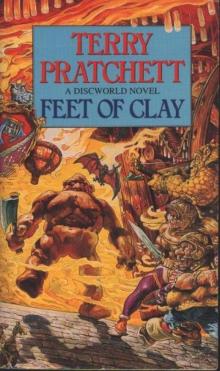 Feet of Clay
Feet of Clay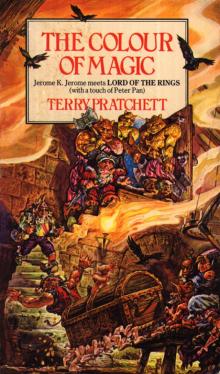 The Color of Magic
The Color of Magic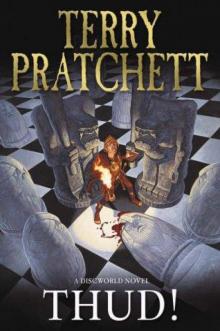 Thud!
Thud!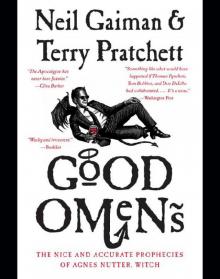 Good Omens: The Nice and Accurate Prophecies of Agnes Nutter, Witch
Good Omens: The Nice and Accurate Prophecies of Agnes Nutter, Witch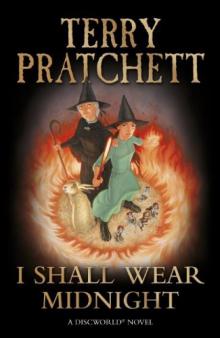 I Shall Wear Midnight
I Shall Wear Midnight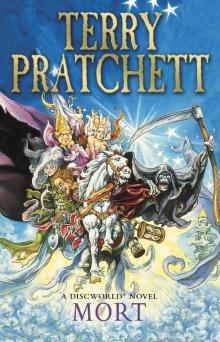 Mort
Mort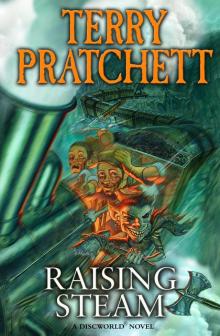 Raising Steam
Raising Steam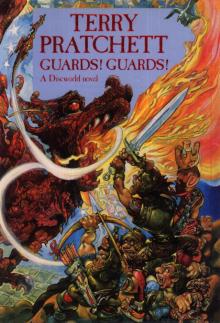 Guards! Guards!
Guards! Guards!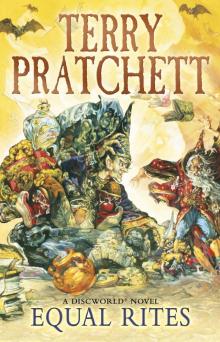 Equal Rites
Equal Rites A Hat Full of Sky
A Hat Full of Sky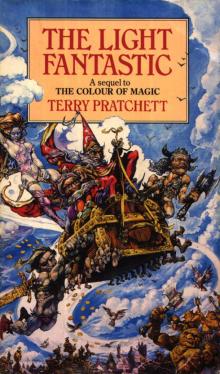 The Light Fantastic
The Light Fantastic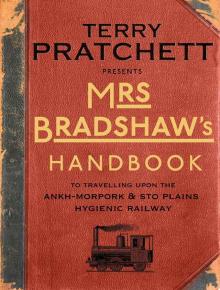 Mrs Bradshaw's Handbook
Mrs Bradshaw's Handbook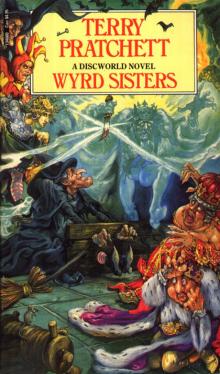 Wyrd Sisters
Wyrd Sisters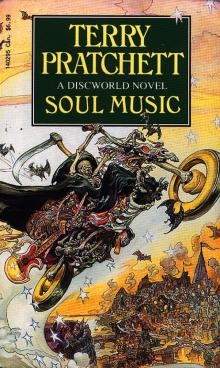 Soul Music
Soul Music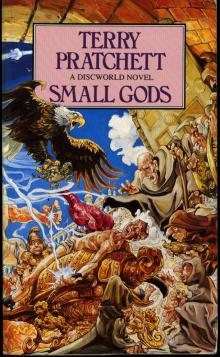 Small Gods
Small Gods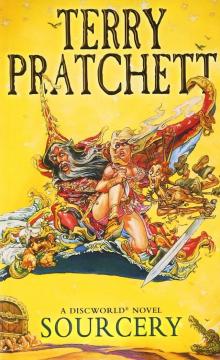 Sourcery
Sourcery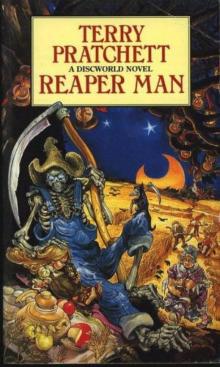 Reaper Man
Reaper Man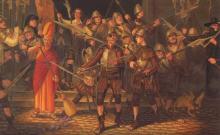 Night Watch
Night Watch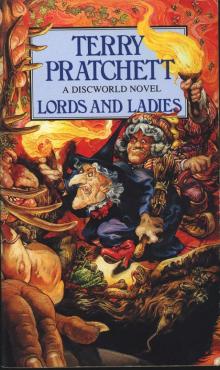 Lords and Ladies
Lords and Ladies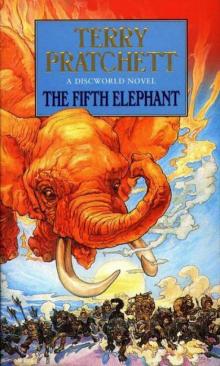 The Fifth Elephant
The Fifth Elephant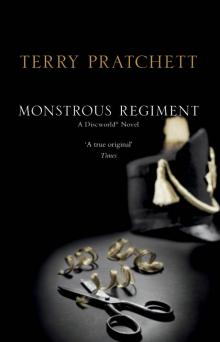 Monstrous Regiment
Monstrous Regiment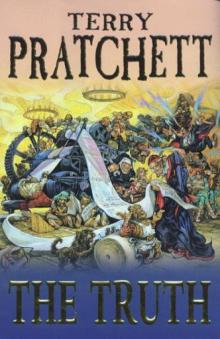 The Truth
The Truth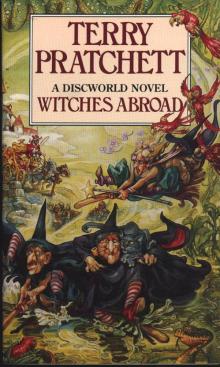 Witches Abroad
Witches Abroad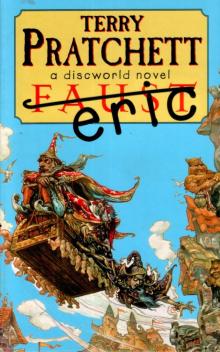 Eric
Eric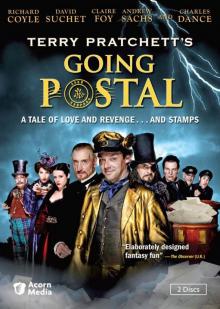 Going Postal
Going Postal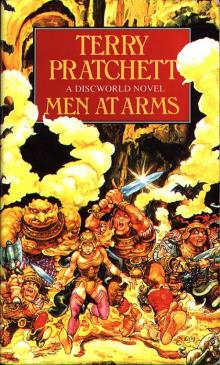 Men at Arms
Men at Arms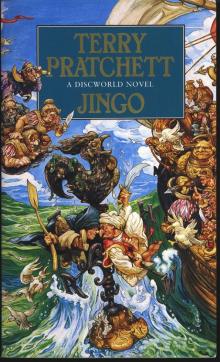 Jingo
Jingo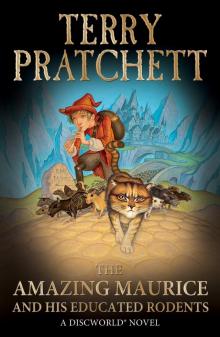 The Amazing Maurice and His Educated Rodents
The Amazing Maurice and His Educated Rodents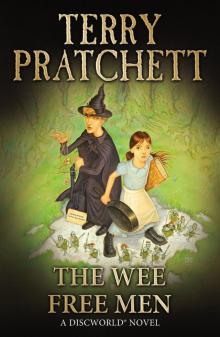 The Wee Free Men
The Wee Free Men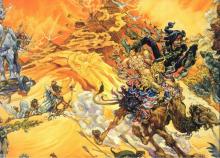 Pyramids
Pyramids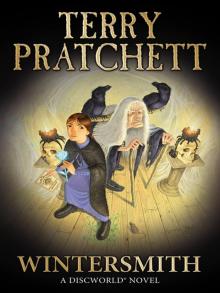 Wintersmith
Wintersmith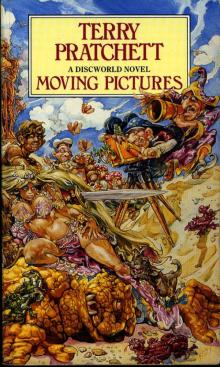 Moving Pictures
Moving Pictures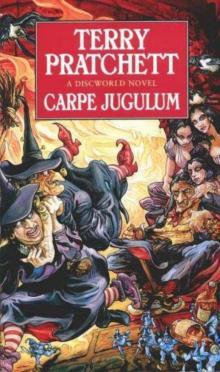 Carpe Jugulum
Carpe Jugulum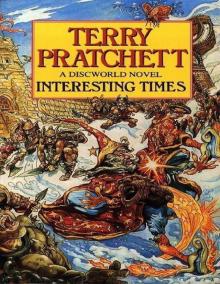 Interesting Times
Interesting Times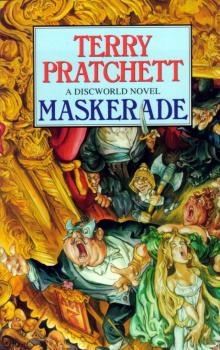 Maskerade
Maskerade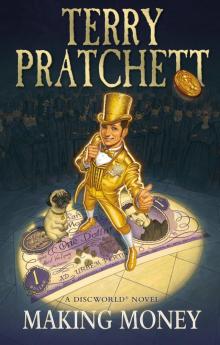 Making Money
Making Money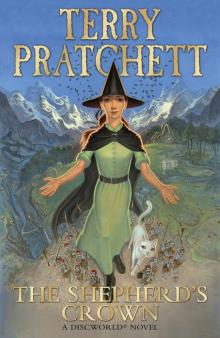 The Shepherd's Crown
The Shepherd's Crown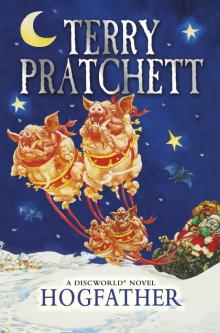 Hogfather
Hogfather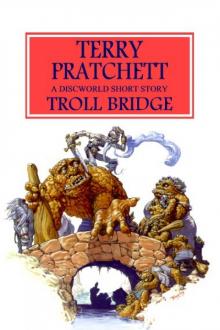 Troll Bridge
Troll Bridge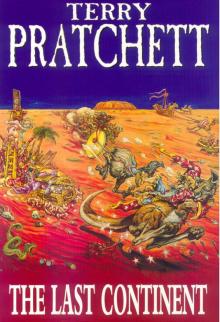 The Last Continent
The Last Continent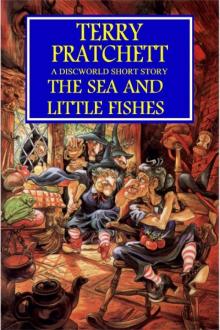 The Sea and Little Fishes
The Sea and Little Fishes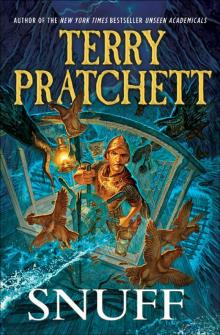 Snuff
Snuff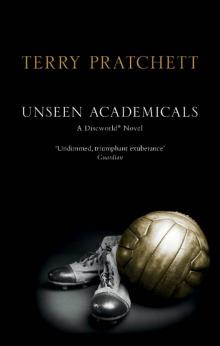 Unseen Academicals
Unseen Academicals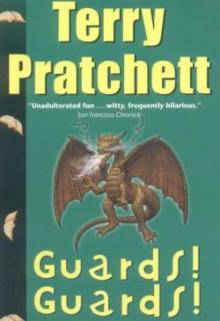 Guards! Guards! tds-8
Guards! Guards! tds-8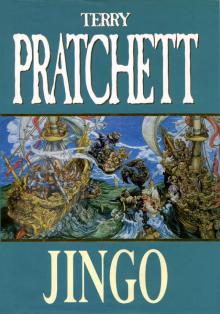 Jingo d-21
Jingo d-21 Turtle Recall: The Discworld Companion ... So Far
Turtle Recall: The Discworld Companion ... So Far The Fifth Elephant d-24
The Fifth Elephant d-24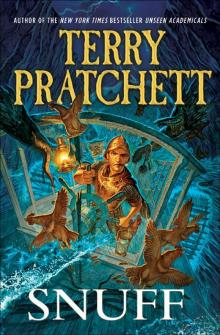 Discworld 39 - Snuff
Discworld 39 - Snuff The Long War
The Long War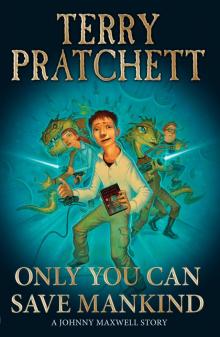 Only You Can Save Mankind
Only You Can Save Mankind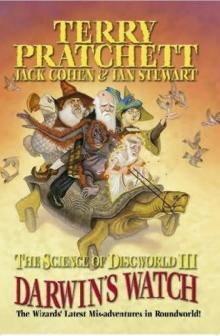 The Science of Discworld III - Darwin's Watch tsod-3
The Science of Discworld III - Darwin's Watch tsod-3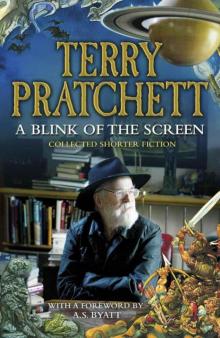 A Blink of the Screen: Collected Short Fiction
A Blink of the Screen: Collected Short Fiction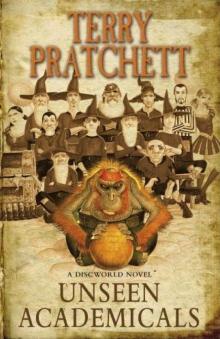 Unseen Academicals d-37
Unseen Academicals d-37 Wings
Wings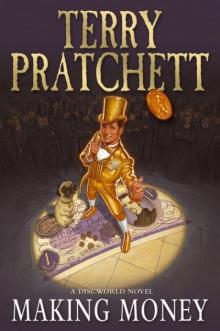 Making Money d-36
Making Money d-36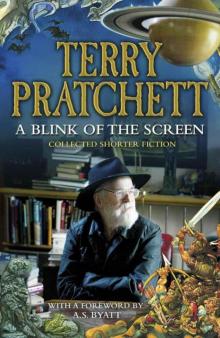 A Blink of the Screen
A Blink of the Screen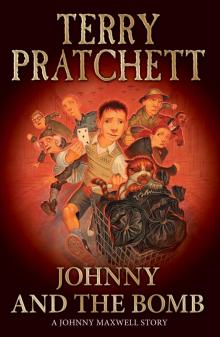 Johnny and the Bomb
Johnny and the Bomb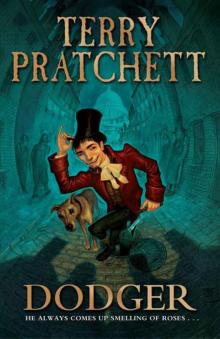 Dodger
Dodger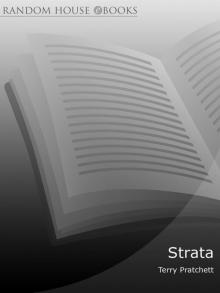 Strata
Strata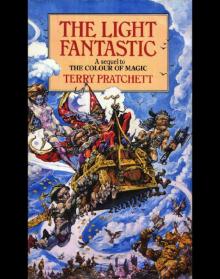 Discworld 02 - The Light Fantastic
Discworld 02 - The Light Fantastic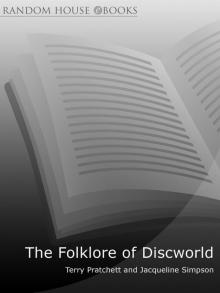 The Folklore of Discworld
The Folklore of Discworld The Science of Discworld
The Science of Discworld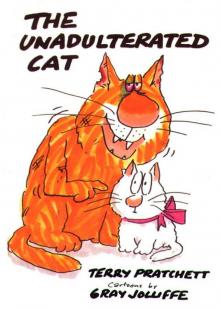 The Unadulterated Cat
The Unadulterated Cat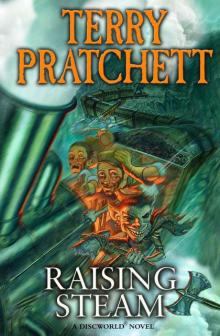 Raising Steam: (Discworld novel 40) (Discworld Novels)
Raising Steam: (Discworld novel 40) (Discworld Novels)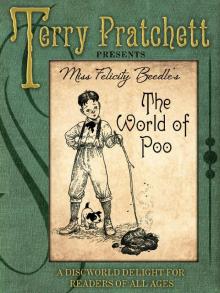 The World of Poo
The World of Poo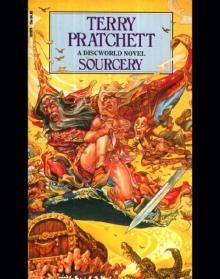 Discworld 05 - Sourcery
Discworld 05 - Sourcery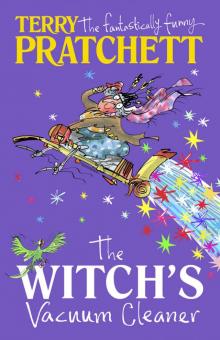 The Witch's Vacuum Cleaner: And Other Stories
The Witch's Vacuum Cleaner: And Other Stories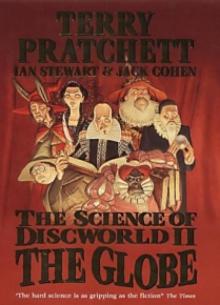 The Science of Discworld II - The Globe tsod-2
The Science of Discworld II - The Globe tsod-2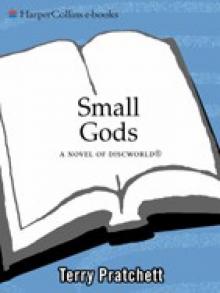 Small Gods: Discworld Novel, A
Small Gods: Discworld Novel, A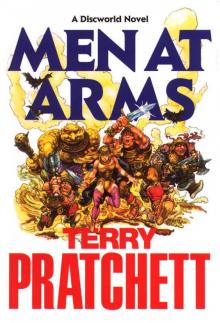 Men at Arms tds-15
Men at Arms tds-15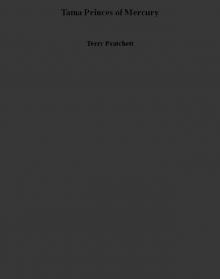 Tama Princes of Mercury
Tama Princes of Mercury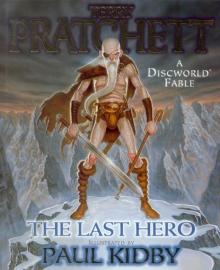 The Last Hero (the discworld series)
The Last Hero (the discworld series)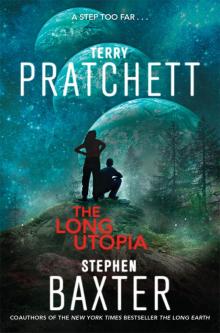 The Long Utopia
The Long Utopia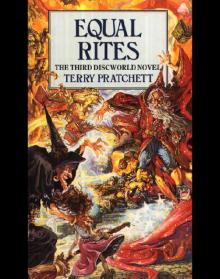 Discworld 03 - Equal Rites
Discworld 03 - Equal Rites Terry Pratchett - The Science of Discworld
Terry Pratchett - The Science of Discworld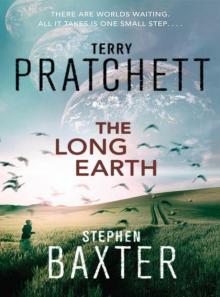 The Long Earth
The Long Earth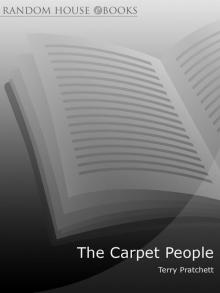 The Carpet People
The Carpet People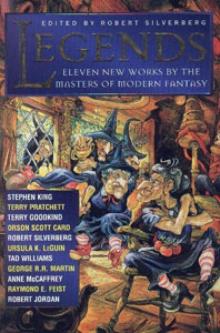 The Sea and Little Fishes (discworld)
The Sea and Little Fishes (discworld)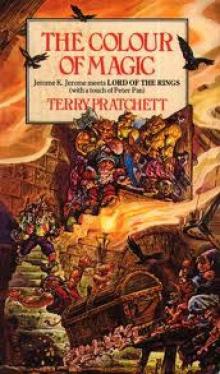 The Colour of Magic
The Colour of Magic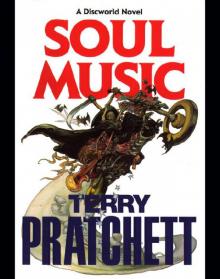 Discworld 16 - Soul Music
Discworld 16 - Soul Music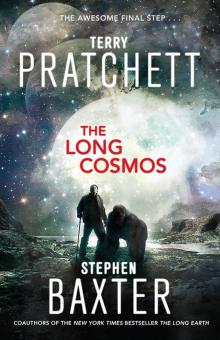 The Long Cosmos
The Long Cosmos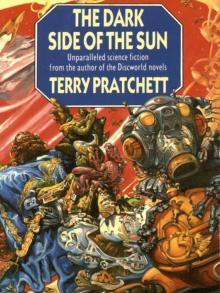 The Dark Side of the Sun
The Dark Side of the Sun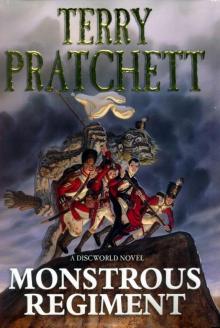 Monstrous Regiment tds-28
Monstrous Regiment tds-28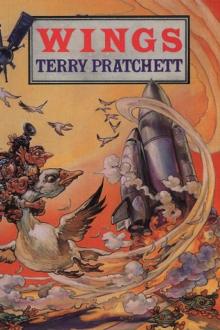 The Bromeliad 3 - Wings
The Bromeliad 3 - Wings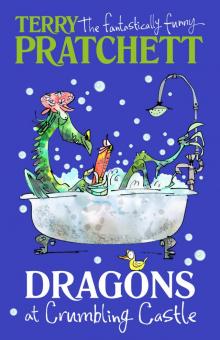 Dragons at Crumbling Castle: And Other Stories
Dragons at Crumbling Castle: And Other Stories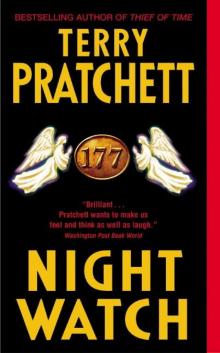 Night Watch tds-27
Night Watch tds-27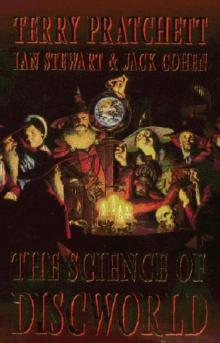 The Science of Discworld I tsod-1
The Science of Discworld I tsod-1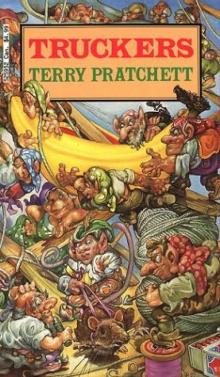 The Bromeliad 1 - Truckers
The Bromeliad 1 - Truckers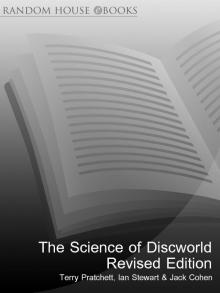 The Science of Discworld Revised Edition
The Science of Discworld Revised Edition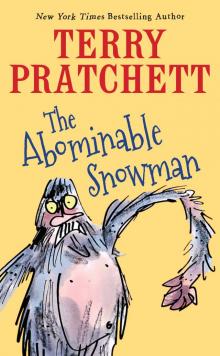 The Abominable Snowman
The Abominable Snowman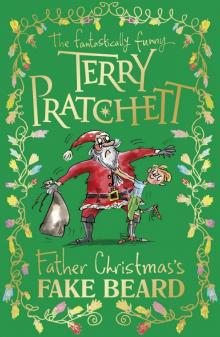 Father Christmas’s Fake Beard
Father Christmas’s Fake Beard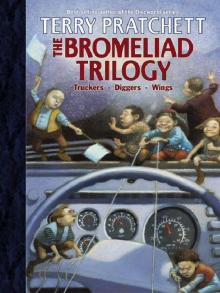 The Bromeliad Trilogy
The Bromeliad Trilogy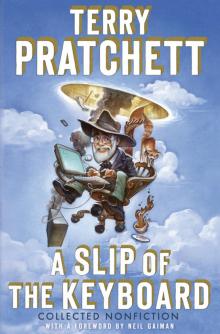 A Slip of the Keyboard
A Slip of the Keyboard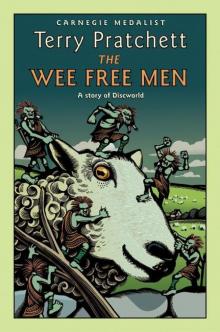 The Wee Free Men d(-2
The Wee Free Men d(-2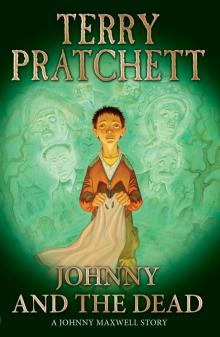 Johnny and the Dead
Johnny and the Dead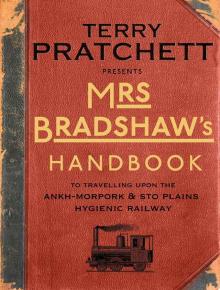 Mrs Bradshaw's Handbook (Discworld Novels)
Mrs Bradshaw's Handbook (Discworld Novels)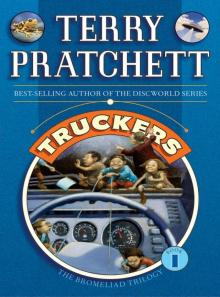 Truckers
Truckers The Amazing Maurice and His Educated Rodents d(-1
The Amazing Maurice and His Educated Rodents d(-1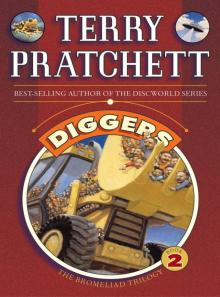 Diggers
Diggers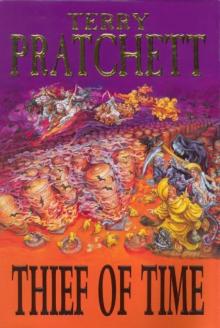 Thief of Time tds-26
Thief of Time tds-26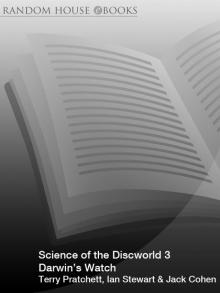 Science of Discworld III
Science of Discworld III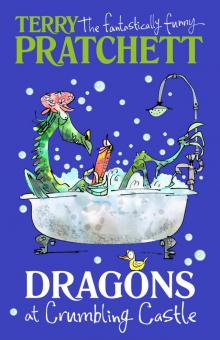 Dragons at Crumbling Castle
Dragons at Crumbling Castle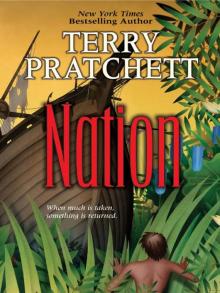 Nation
Nation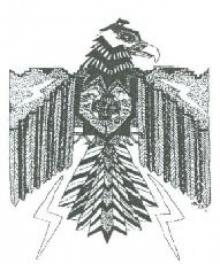 Darwin's Watch
Darwin's Watch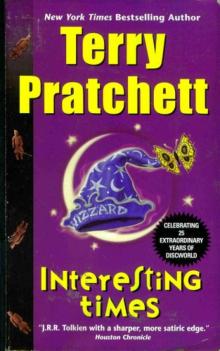 Interesting Times d-17
Interesting Times d-17 The Bromeliad 2 - Diggers
The Bromeliad 2 - Diggers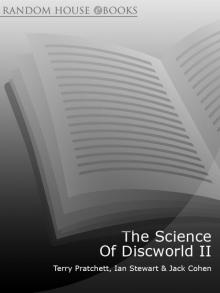 The Science of Discworld II
The Science of Discworld II